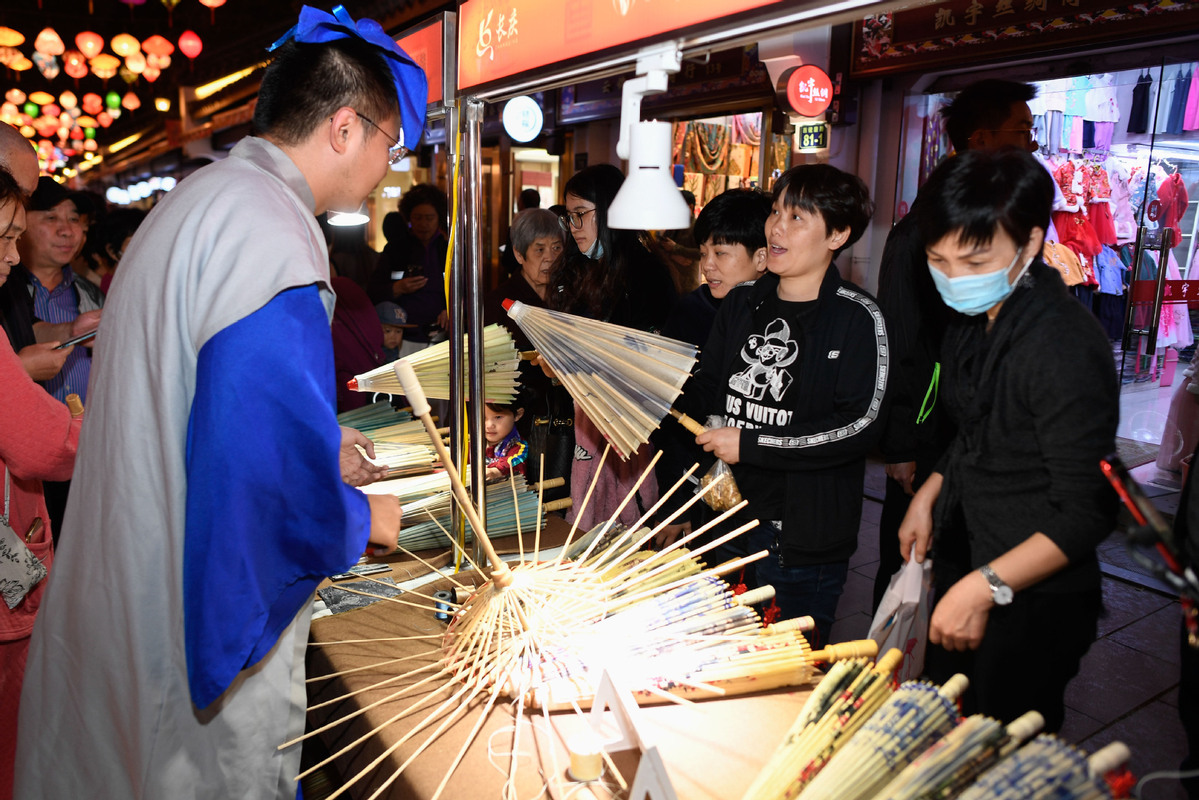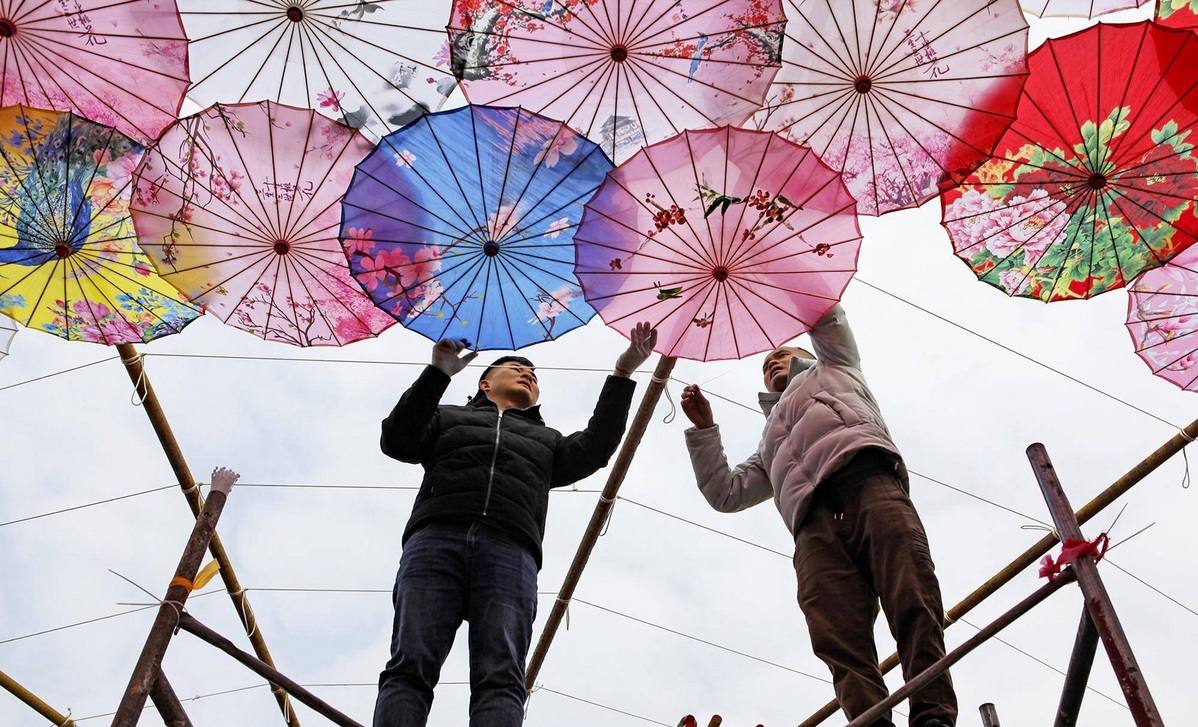油纸伞 Unbelievable umbrellas
chinaculture.org 2024-01-14 09:00

A look at a man, his craft and an obscure art

Of the myriad inventions from antiquity that have forged their way into the modern day, the umbrella (伞, sǎn) is one of the few to have retained its shape, function and beauty. Known to many ancient civilizations, the umbrella has garnered mythological, religious and social connotations, and the ancient craft of traditional umbrella making in China is still popular. Beijing boasts a variety of shops selling uniquely crafted umbrellas. In the historic Dashilanr (大栅栏, dà shí lànr) business street area, Chang Tao's Qinfenghanyue Craft Shop (秦风汉月油纸伞, qín fēng hàn yuè yóu zhǐ sǎn) is one of the many places where this craft is still a lifestyle.
Chang is a master of this art and has perfected his technique and aesthetic (技法和审美, jì fǎ hé shěn měi) through years of devotion (潜心钻研, qián xīn zuān yán). A fervent sentinel of traditional Chinese culture, Chang - painter, poet and umbrella maker (伞匠, sǎn jiàng) - was born in 1978 in Guangxi Zhuang autonomous region. Early in his career as a painter, he was asked to donate a teahouse and decided to incorporate the traditional handmade umbrellas he remembered from his childhood in rainy Guangxi. But, he realized that none of them matched the beauty or quality of the ones his grandfather made. So he established a small studio in Guangxi combining modern techniques with a love for the art of umbrella making. Artists in Guangxi and Beijing now work under his guidance, following his 86 steps to making a single umbrella, a process that sometimes takes 20 days.

The bamboo is harvested from the wilds of Guangxi for processing the following year. The bamboo to be used in the umbrella's construction is soaked in water (泡竹/水浸, pào zhú / shuǐ jìn), steamed (蒸竹/水煮, zhēng zhú / shuǐ zhǔ), dried in the sun (晒竹, shài zhú), polished (刨竹, páo zhú) and carved (刻竹, kè zhú).
One of the most complicated steps is the umbrella's skeleton (伞骨, sǎn gǔ), which is stretched, assembled, glued and dried. The paper is a thin cotton, brittle during the work process; it is soaked in tung oil (桐油, tóng yóu) for nine days to harden and waterproof it (使其防水,坚固耐用, shǐ qí fáng shuǐ , jiān gù nài yòng). The final step is adding calligraphy or painted scenery to give the umbrella its traditional look and artistic identity.
Different sides of umbrellas:
The first umbrella: Chinese legend has it that, during the Spring and Autumn Period (770-476 BC), the wife of the famous carpenter Lu Ban (鲁班, lǔ bān) made the first umbrella (最早的伞由木匠鼻祖鲁班的妻子发明, zuì zǎo de sǎn yóu mù jiàng bí zǔ lǔ bān de qī zǐ fā míng) to protect him from the elements while he worked. This progenitor to the modern device was assembled from split bamboo and covered with the pelts of local animals.
Oil from antiquity: This is obtained by pressing the seeds (压榨油桐籽, yā zhà yóu tóng zǐ) of the indigenous Vernicia Fordii or tung oil tree (油桐树, yóu tóng shù).
Characterized by its desiccative qualities, this oil has been used by the Chinese since antiquity to waterproof boats and umbrellas. Marco Polo is said to have brought back a sample of this oil after his first visit to China.
Bridal umbrella (婚聘油纸伞, hūn pìn yóu zhǐ sǎn): In addition to resisting deluge and sweltering heat, umbrellas are used in some traditional Chinese marriage rites. When the bride arrives at her new house, she is often accompanied by a woman who claims a red umbrella (红色油纸伞, hóng sè yóu zhǐ sǎn) as a symbol of protection against evil spirits (消灾辟邪, xiāo zāi bì xié) and the obstacles that the new couple will face.
Status symbol (地位象征, dì wèi xiàng zhēng): In China, the umbrella was initially used during important ceremonies as a symbol of elegance, prestige and power. High-ranking officials were escorted with umbrellas built with very elaborate fabrics of fine yellow (黄盖伞, huáng gài sǎn) , which symbolized royalty (皇家的象征, huáng jiā de xiàng zhēng) in China.
来源:chinaculture.org
编辑:万月英

















 英语点津微信
英语点津微信 双语小程序
双语小程序